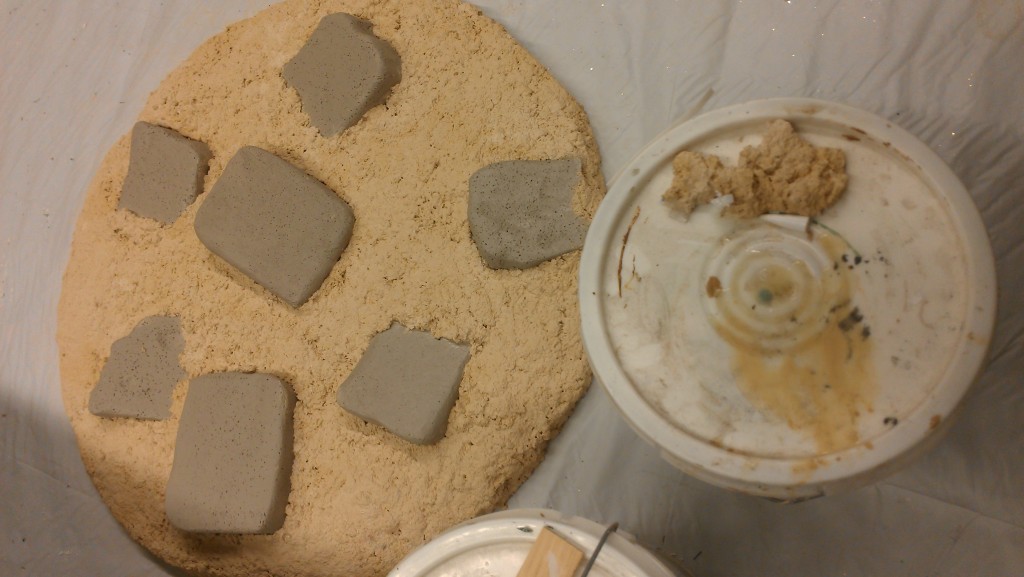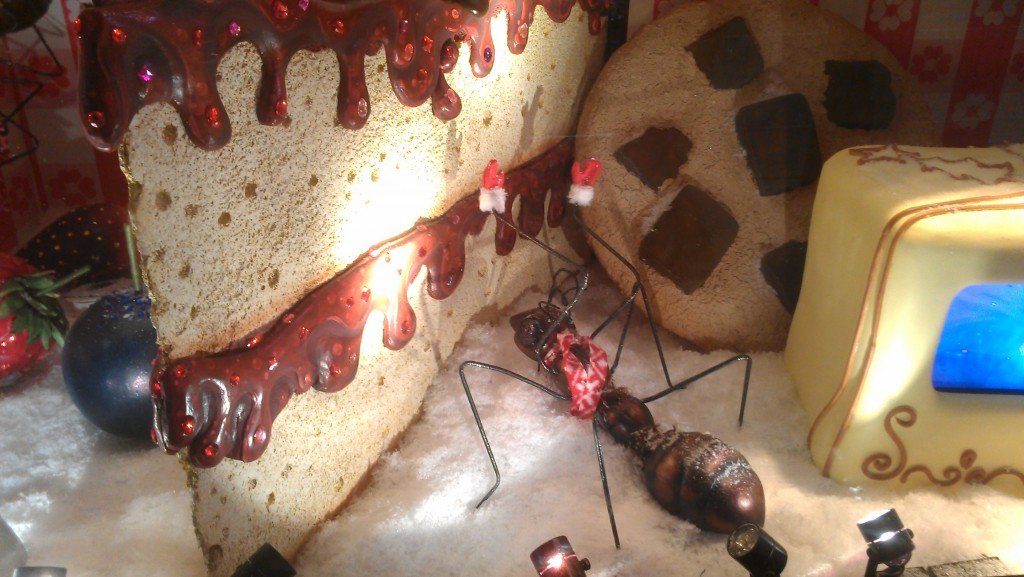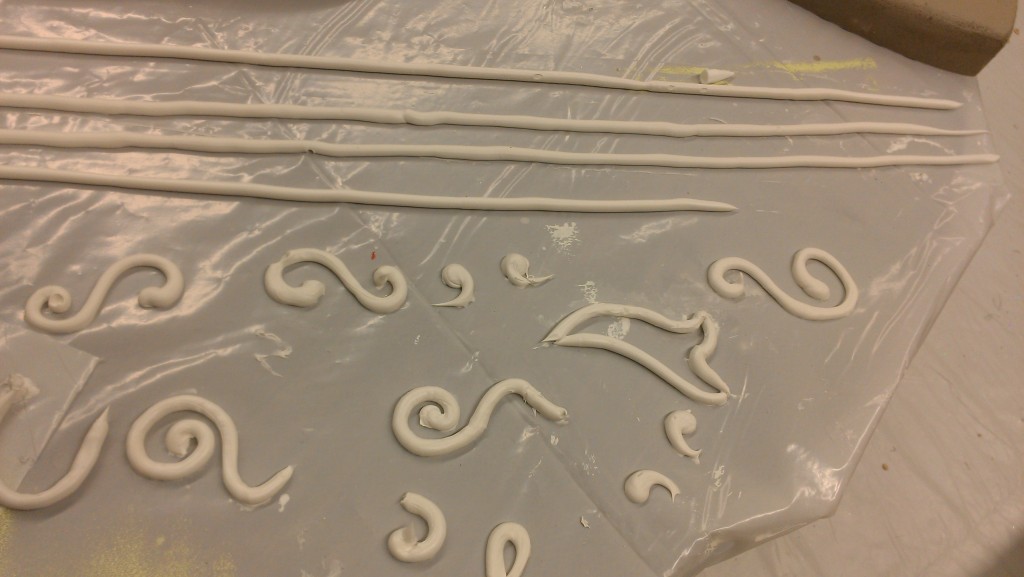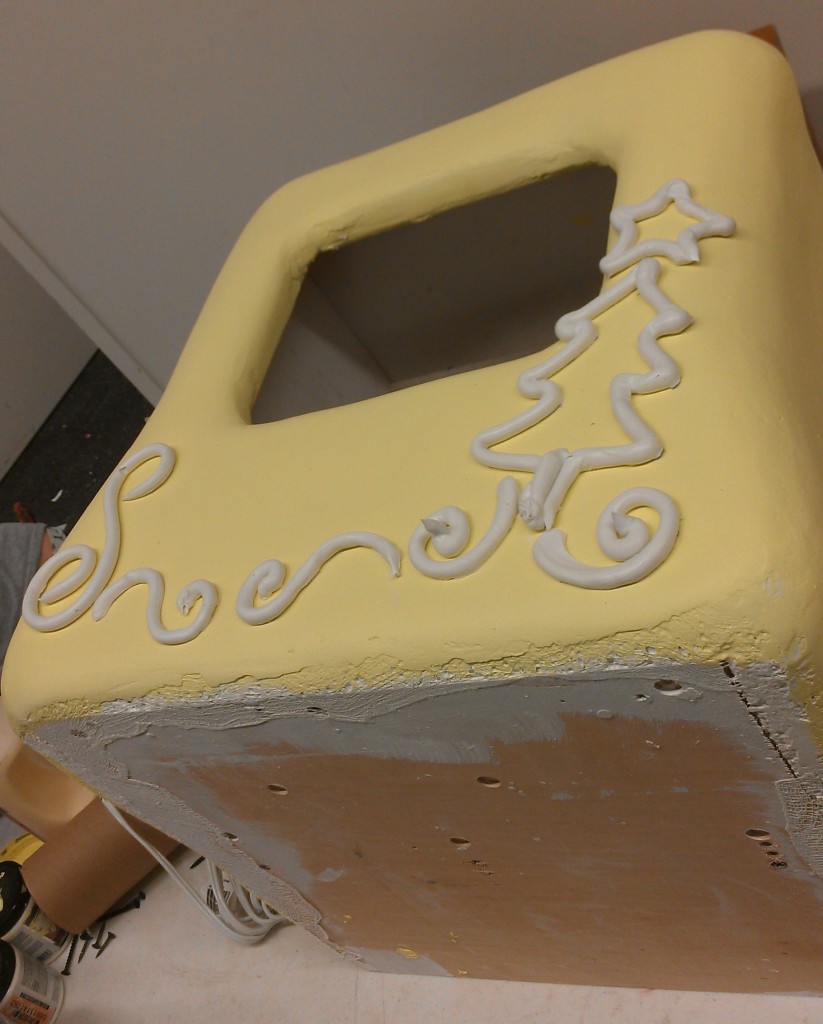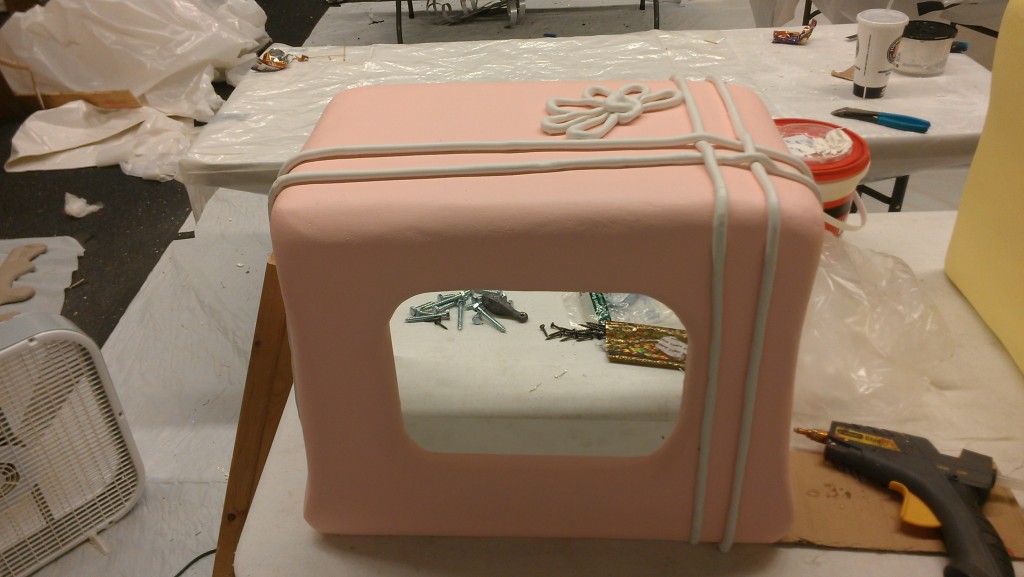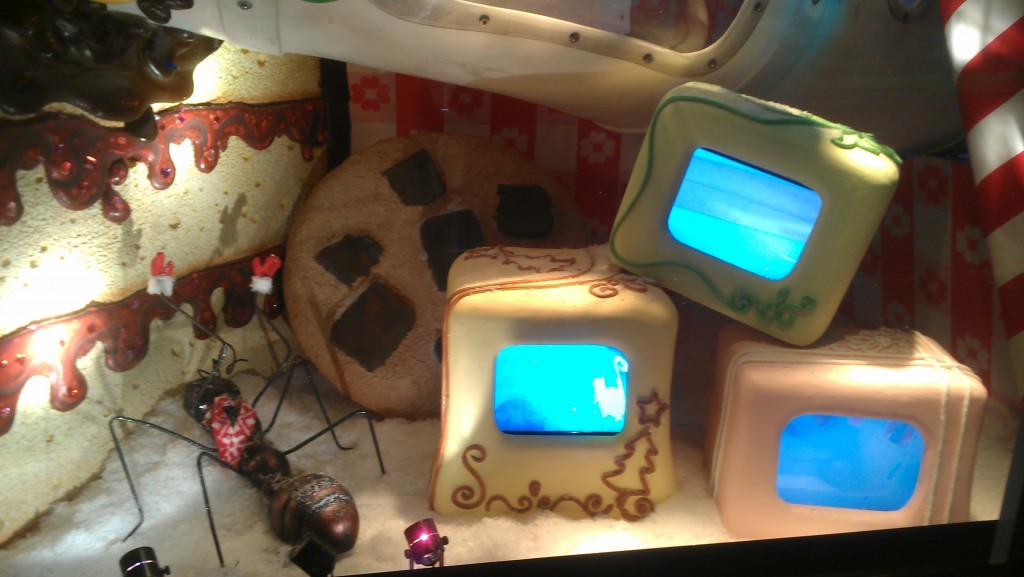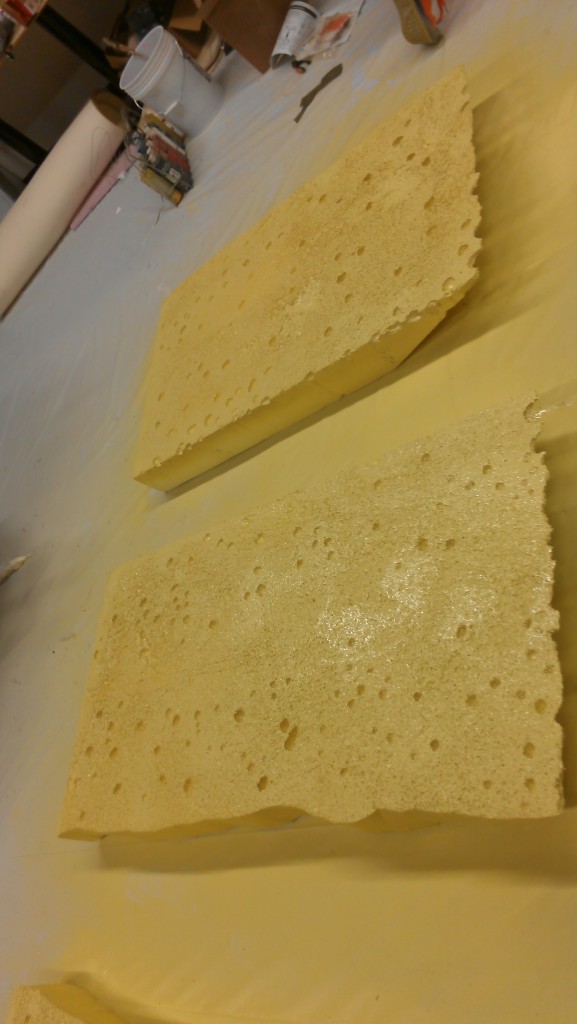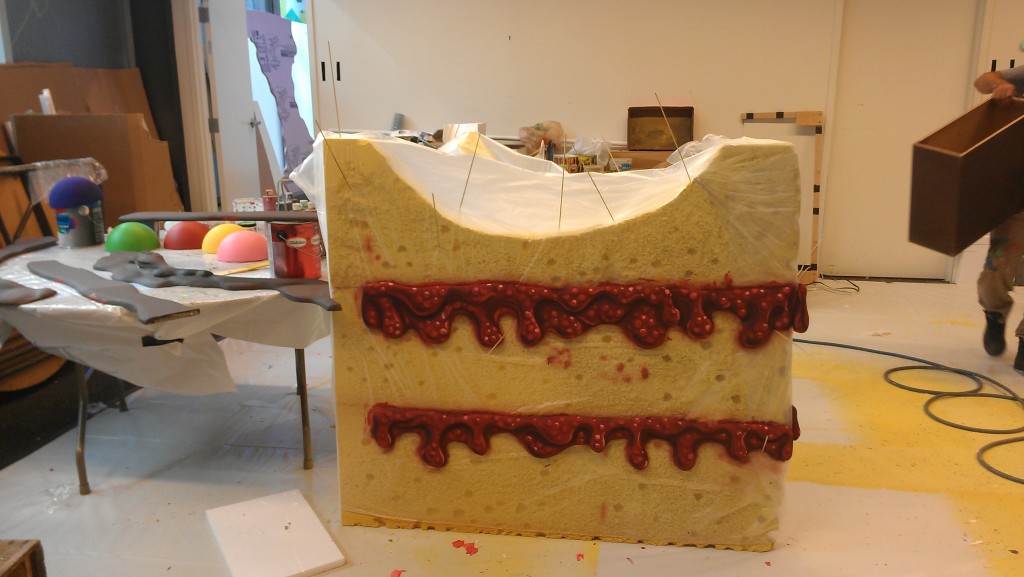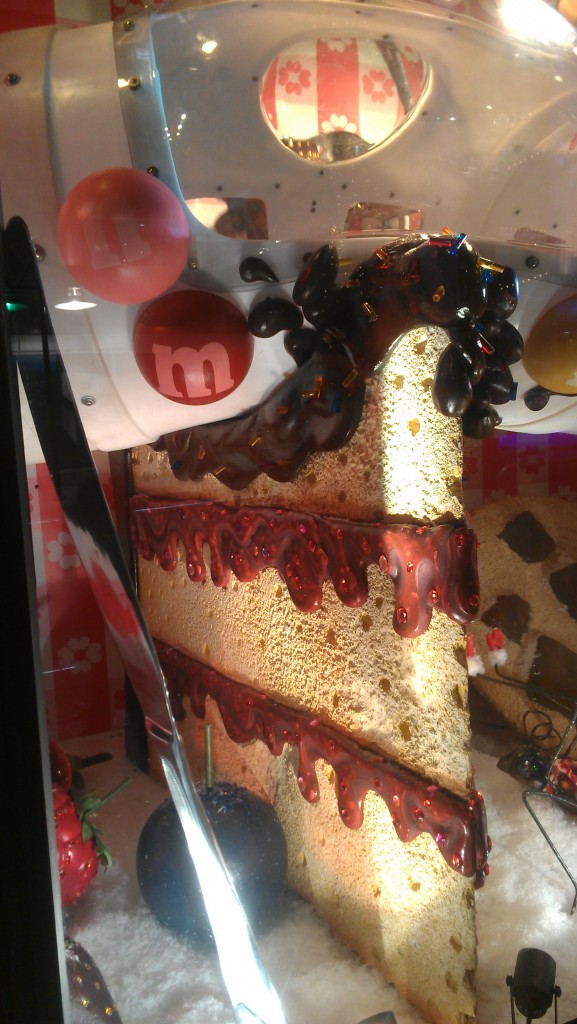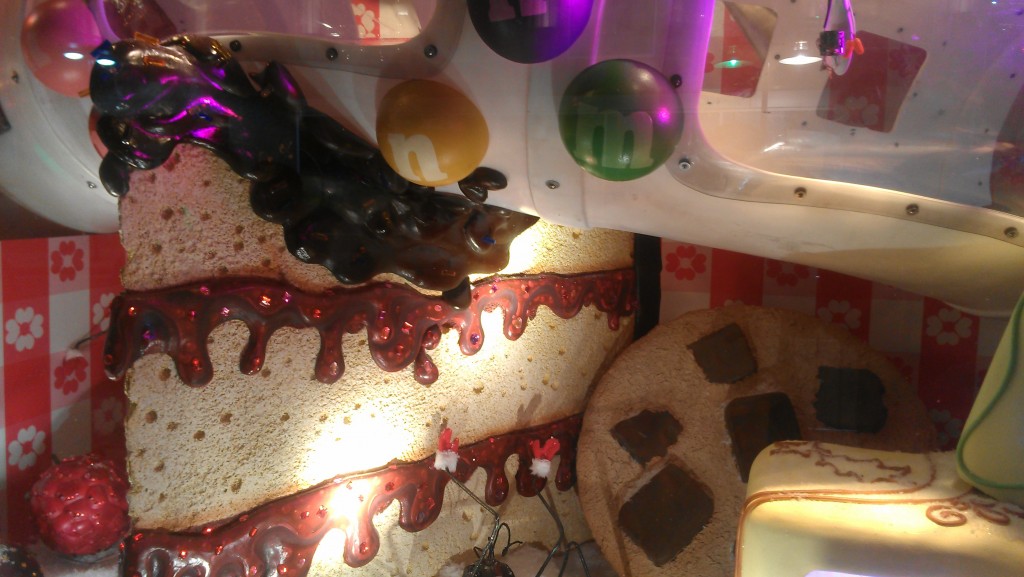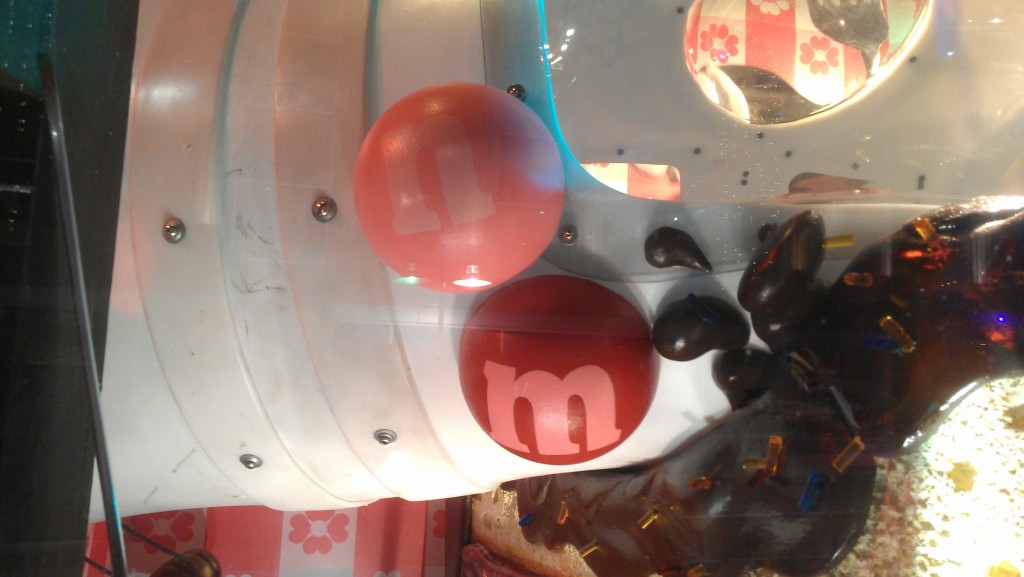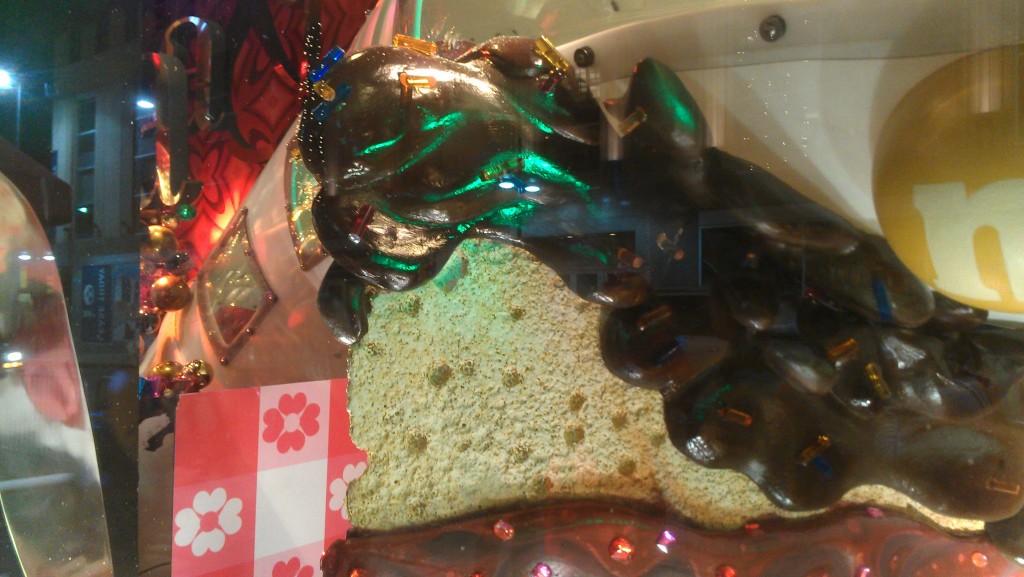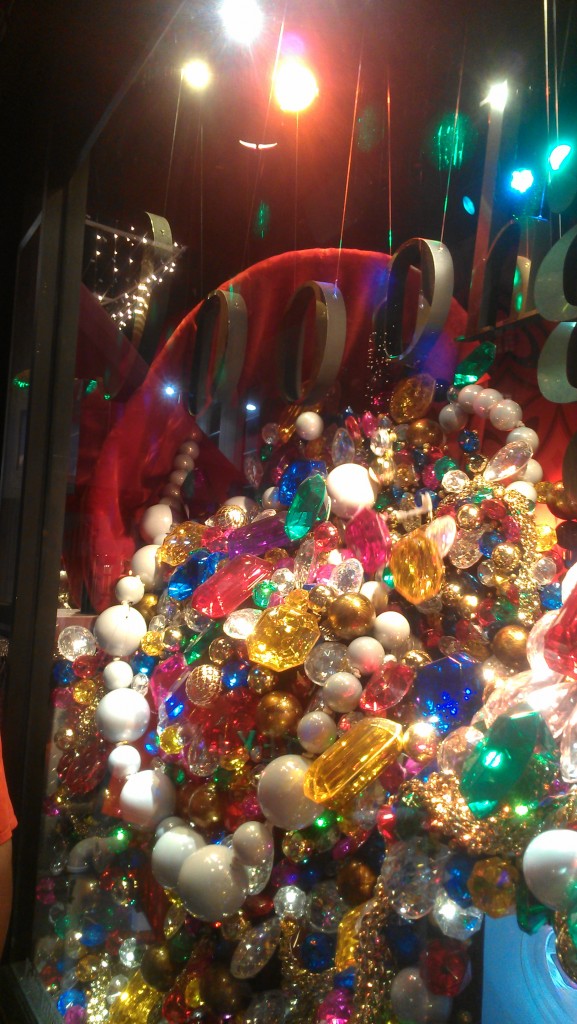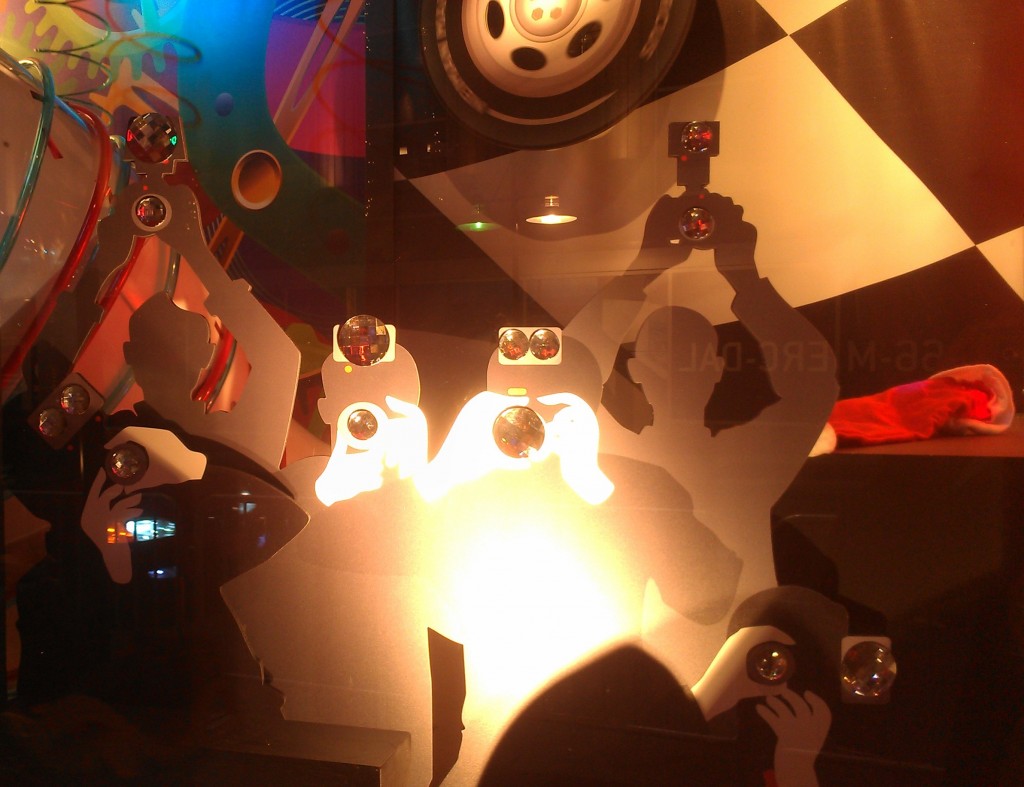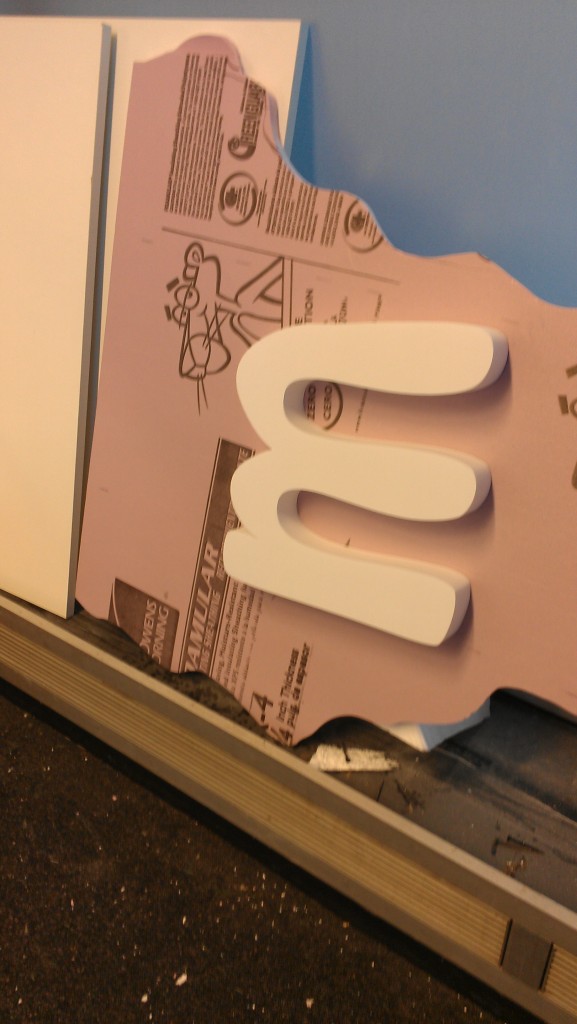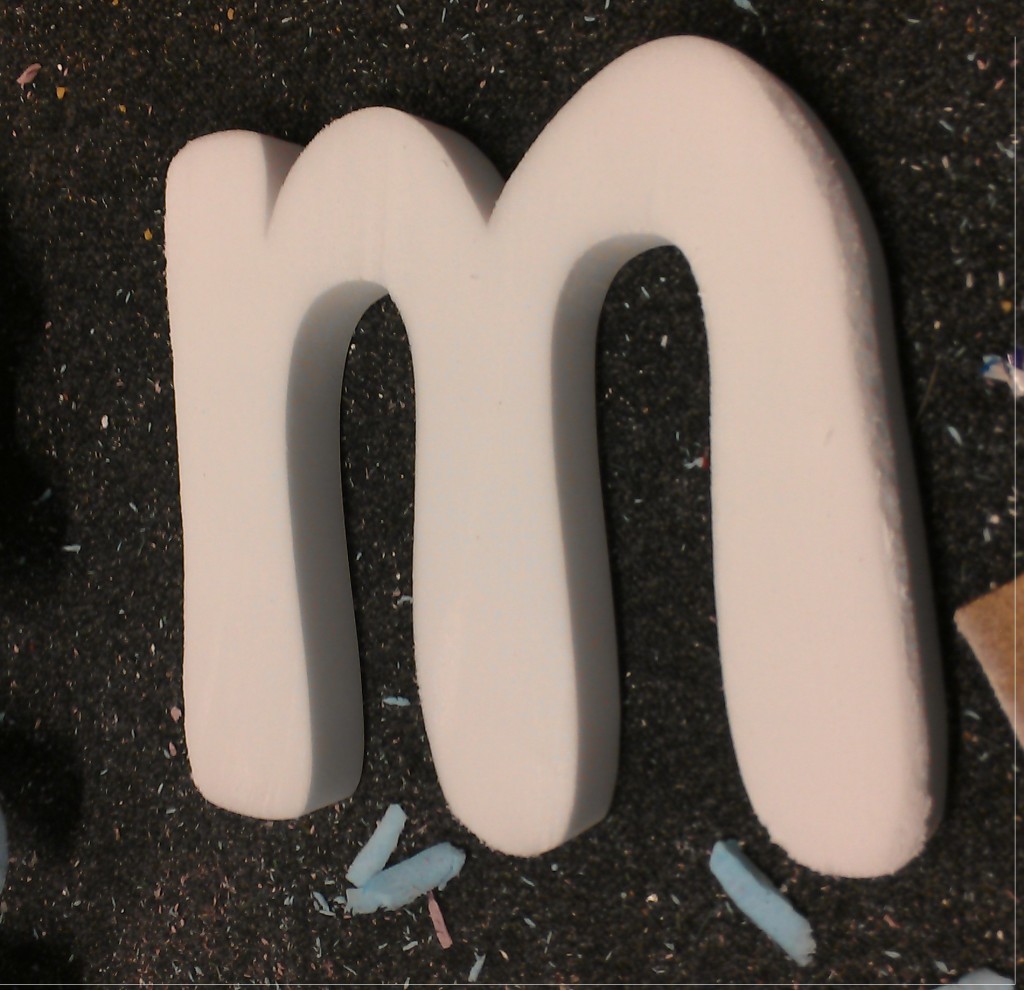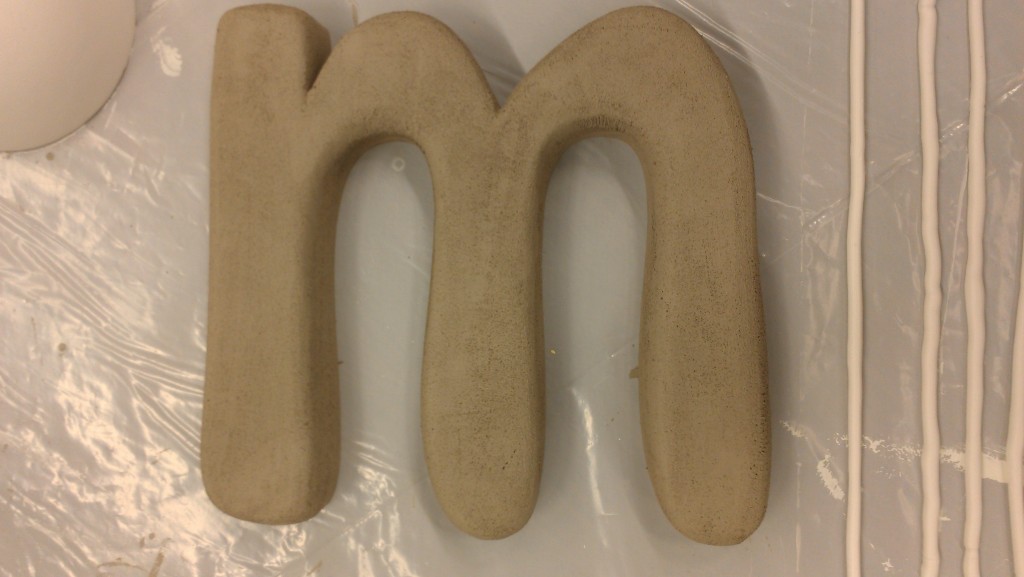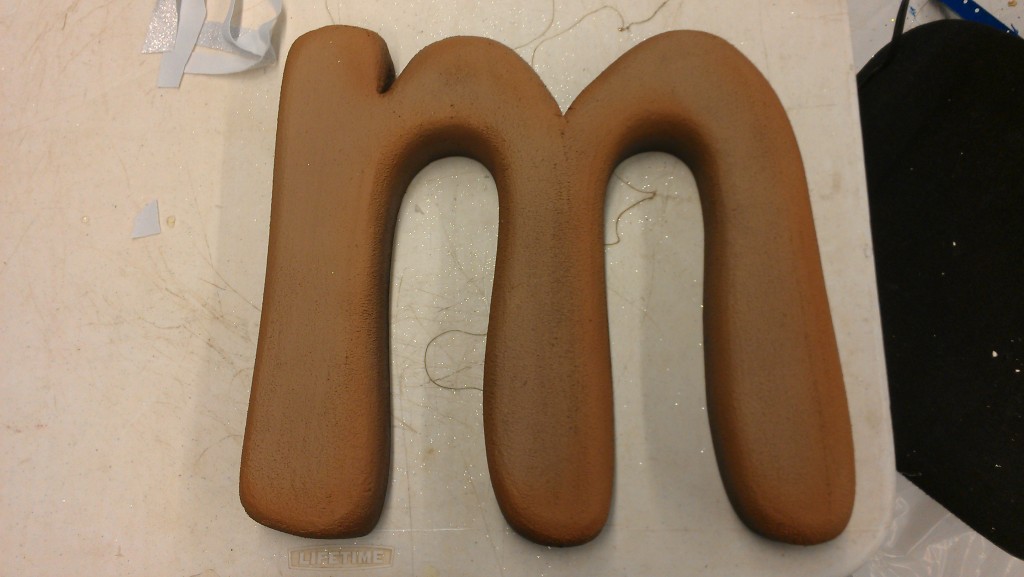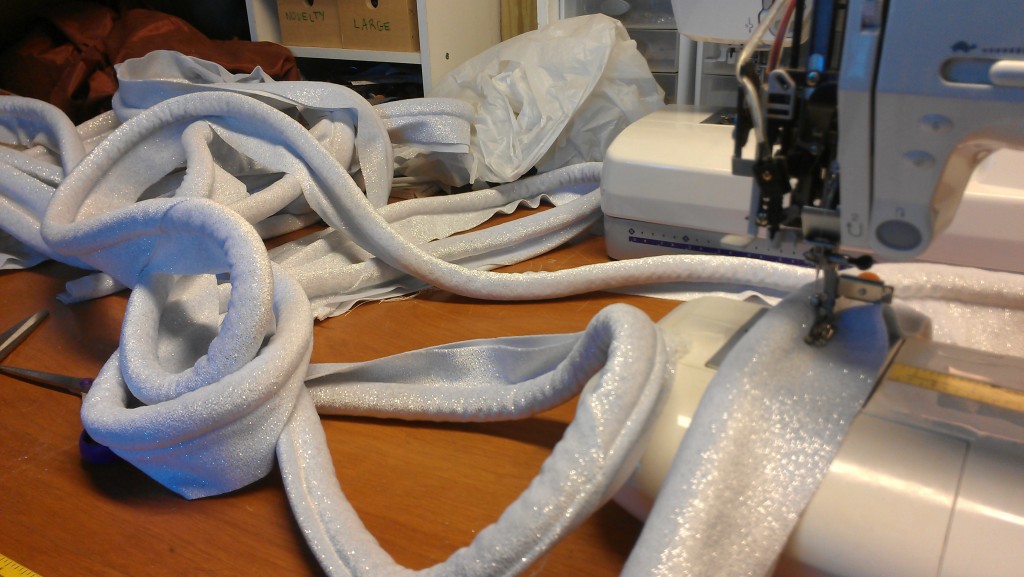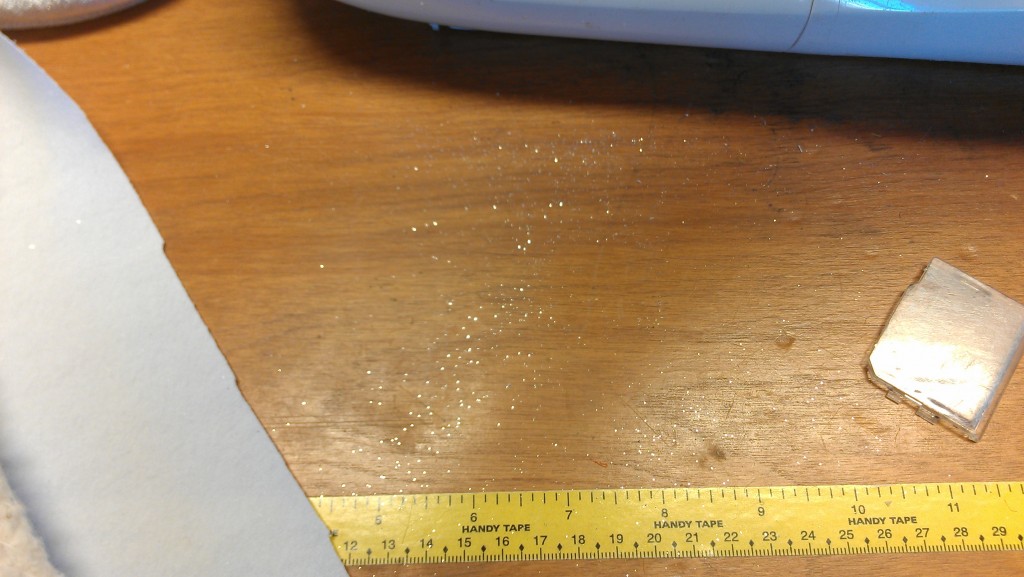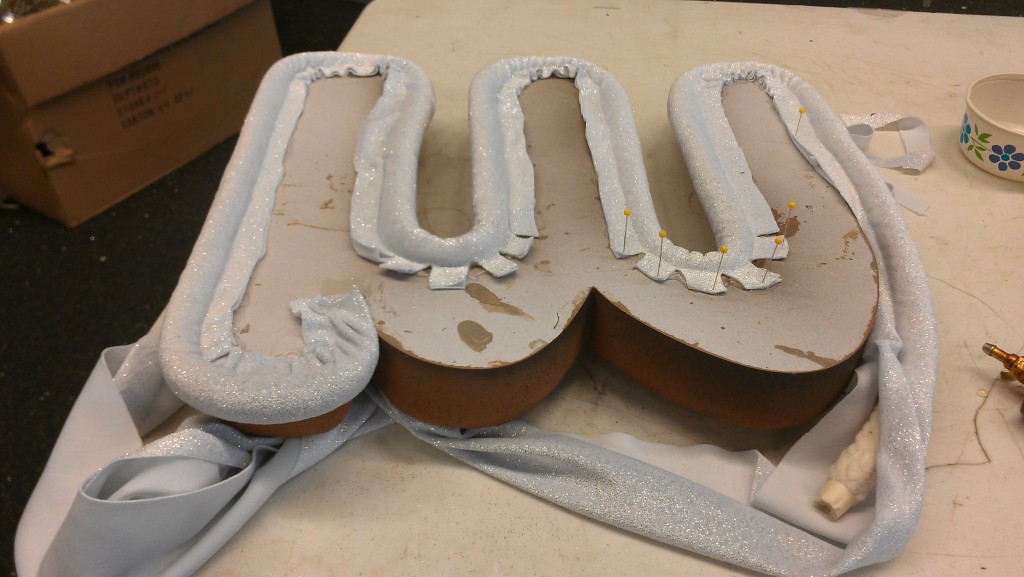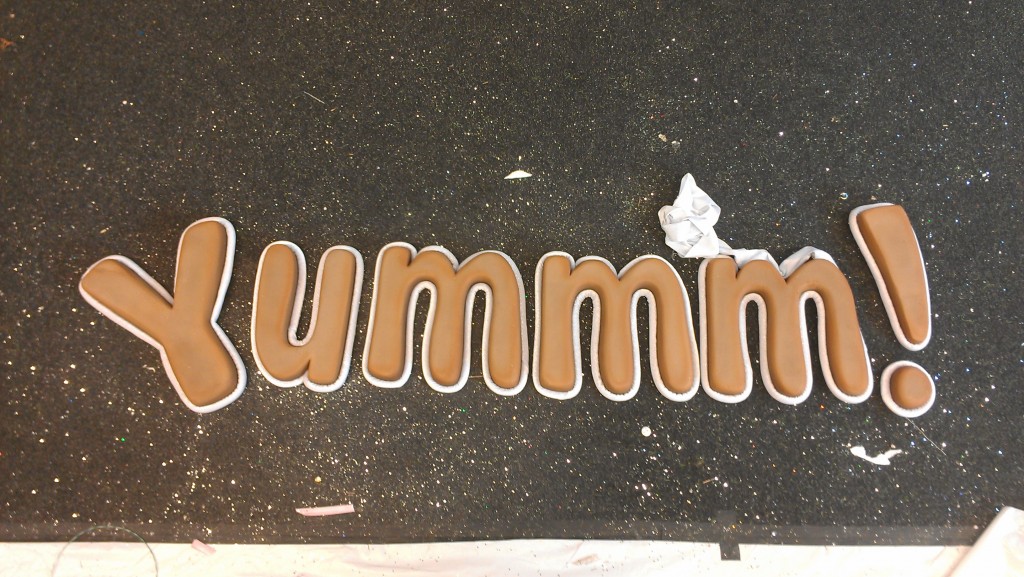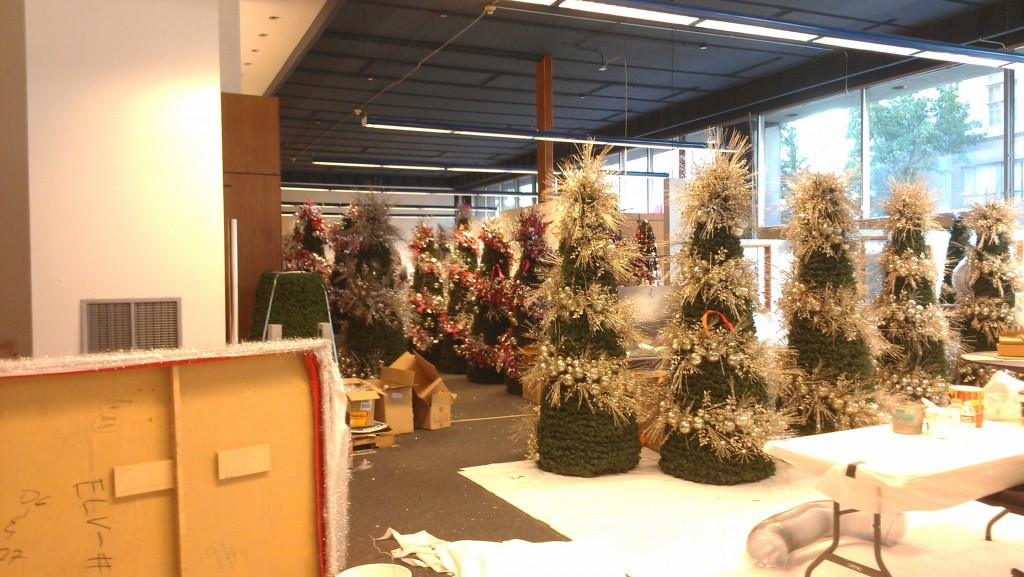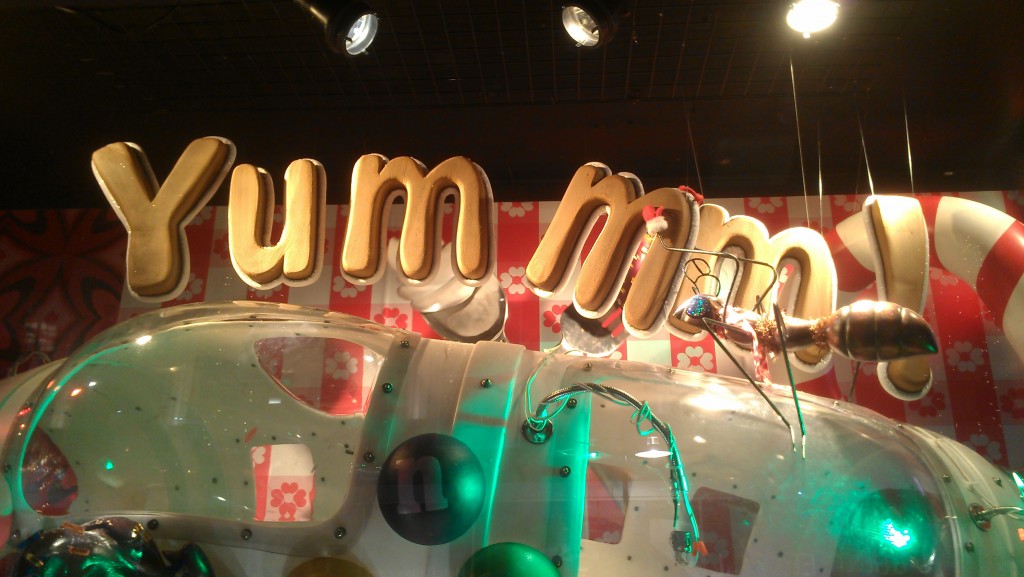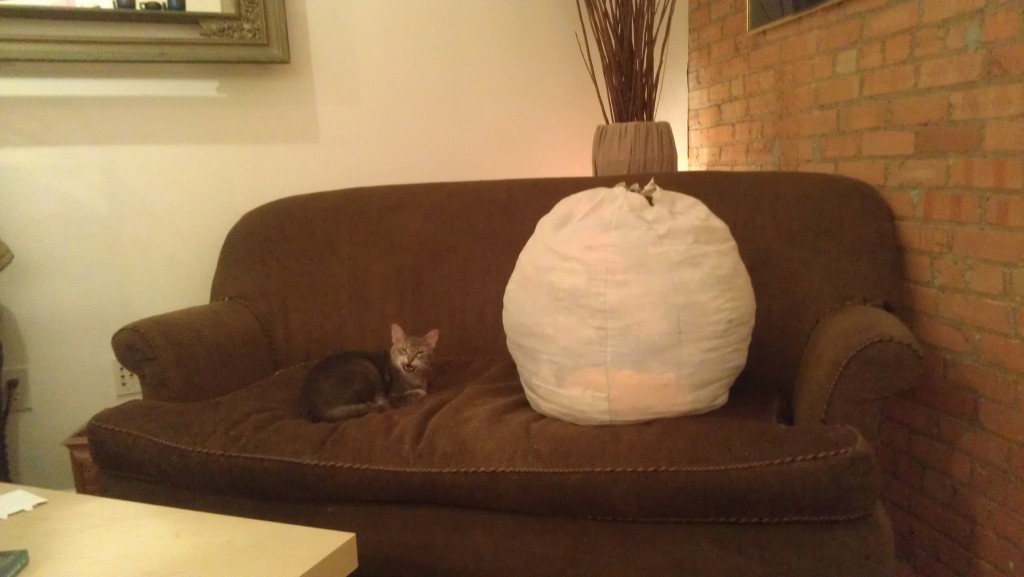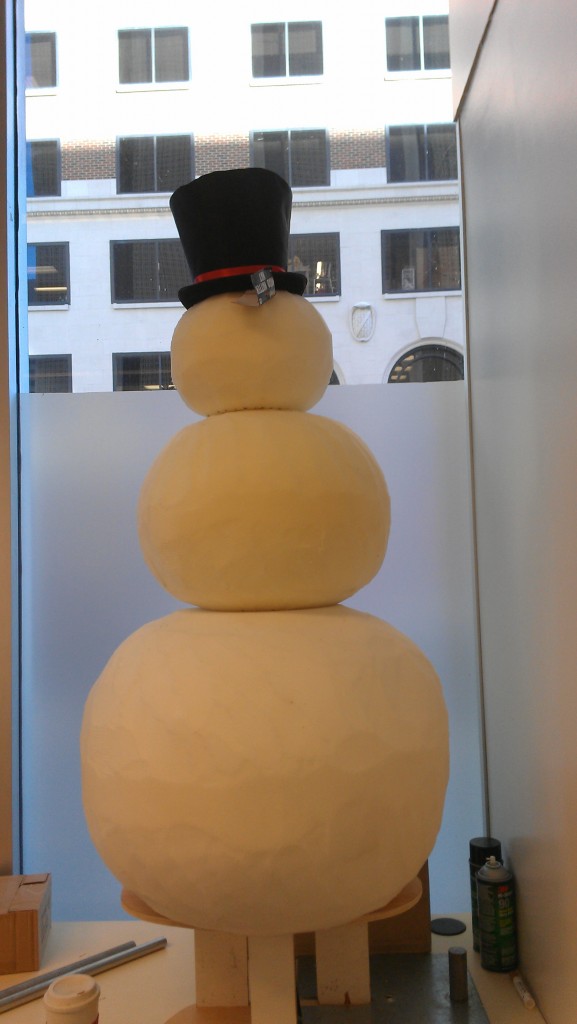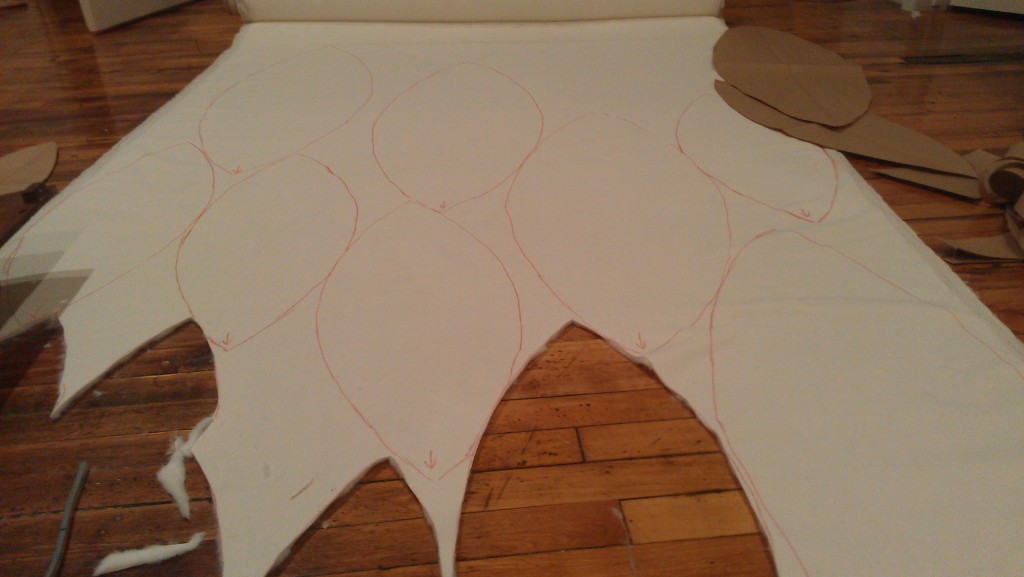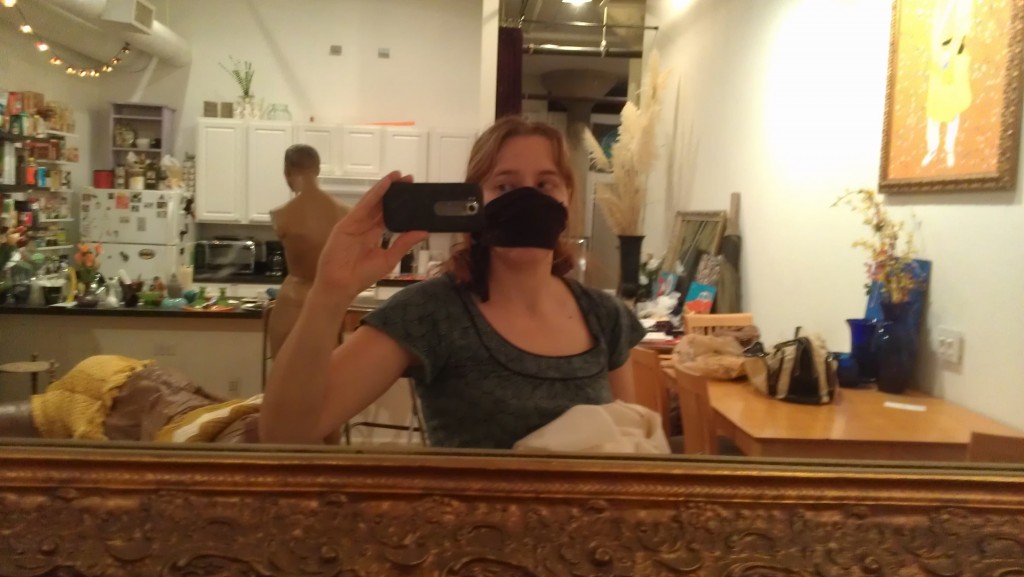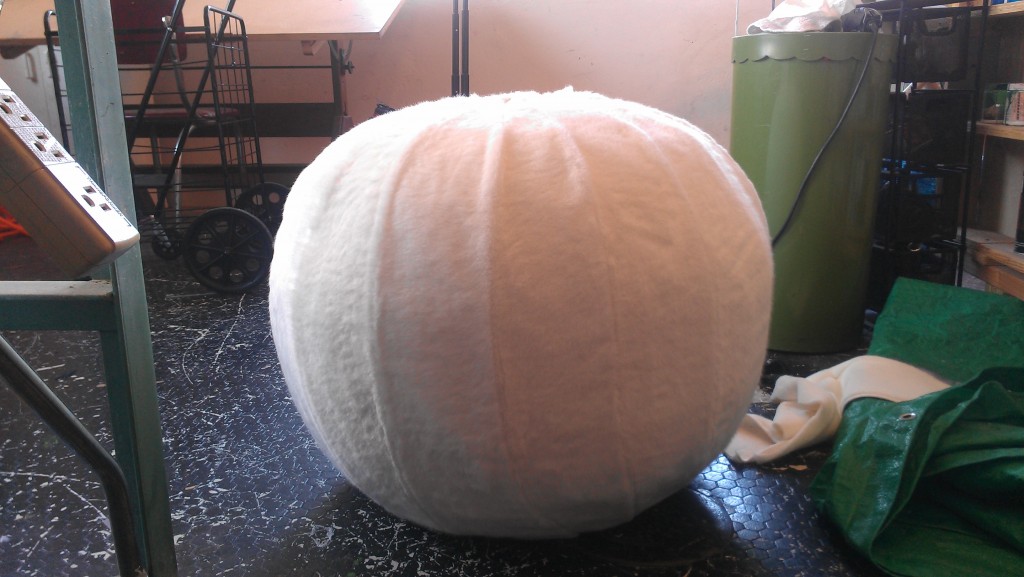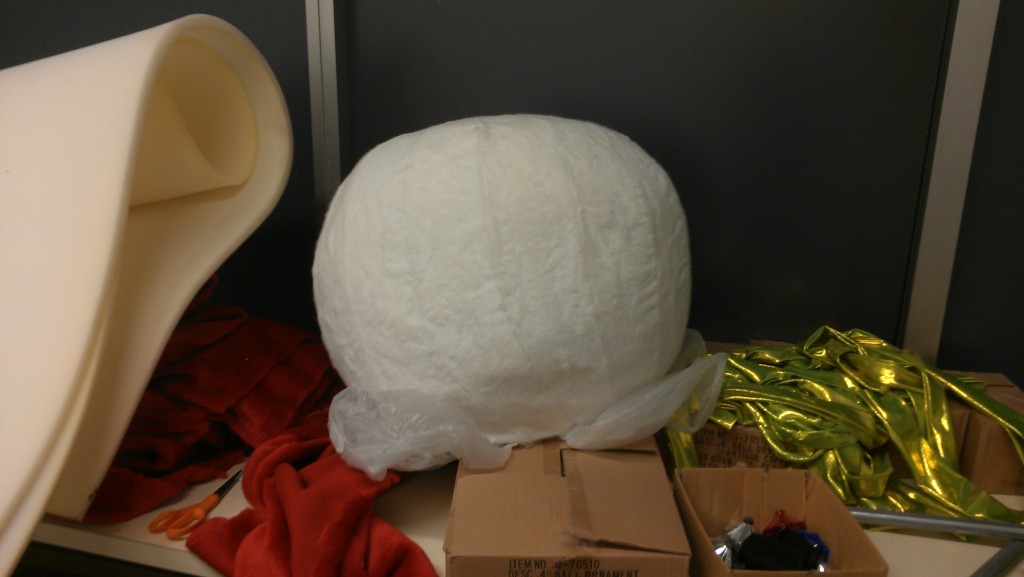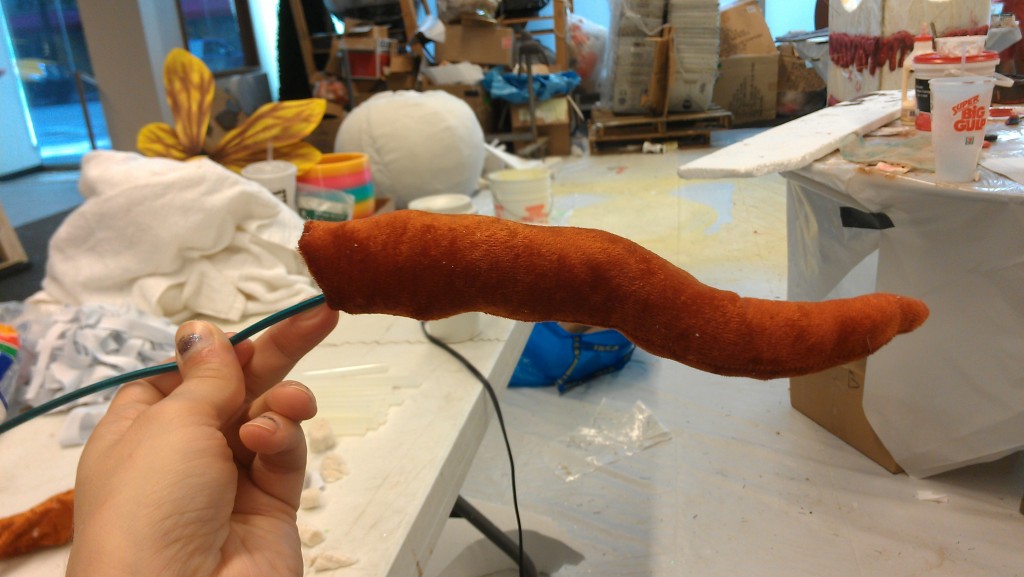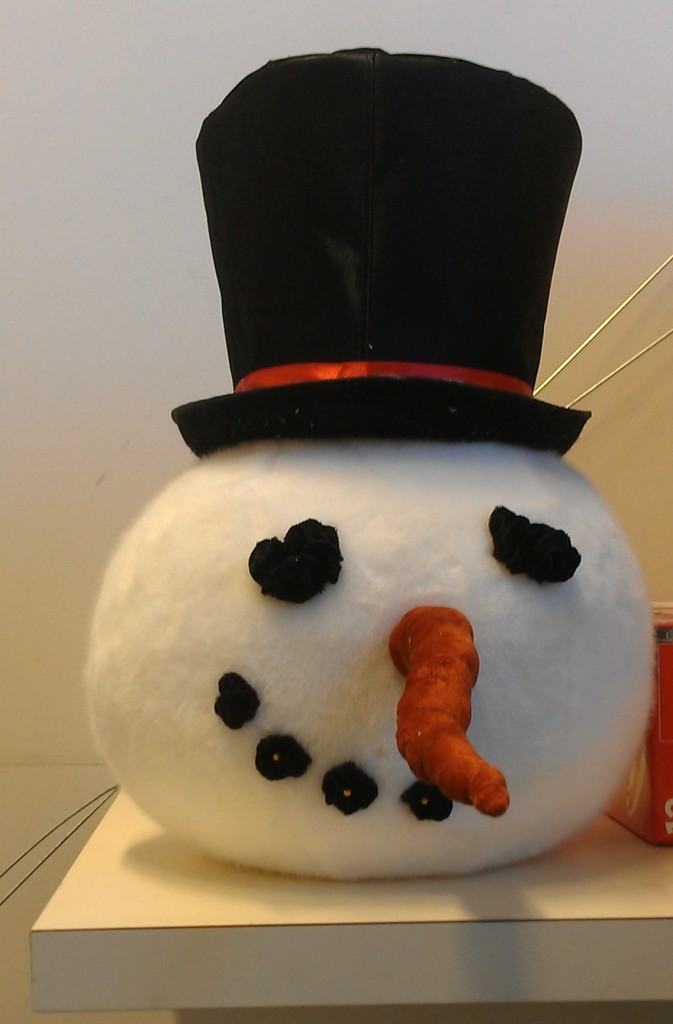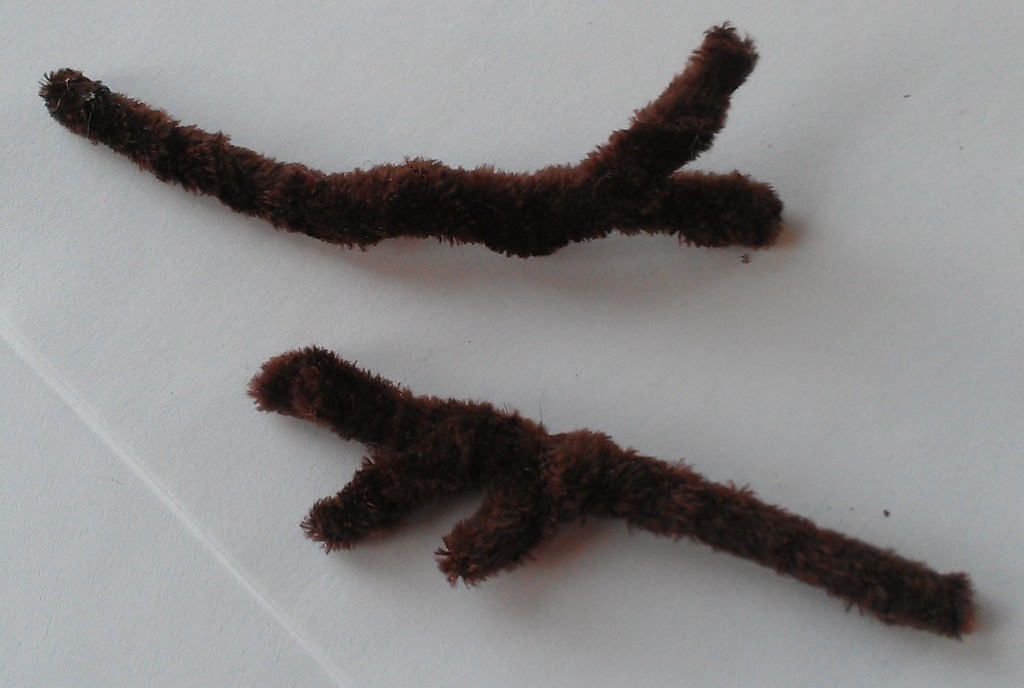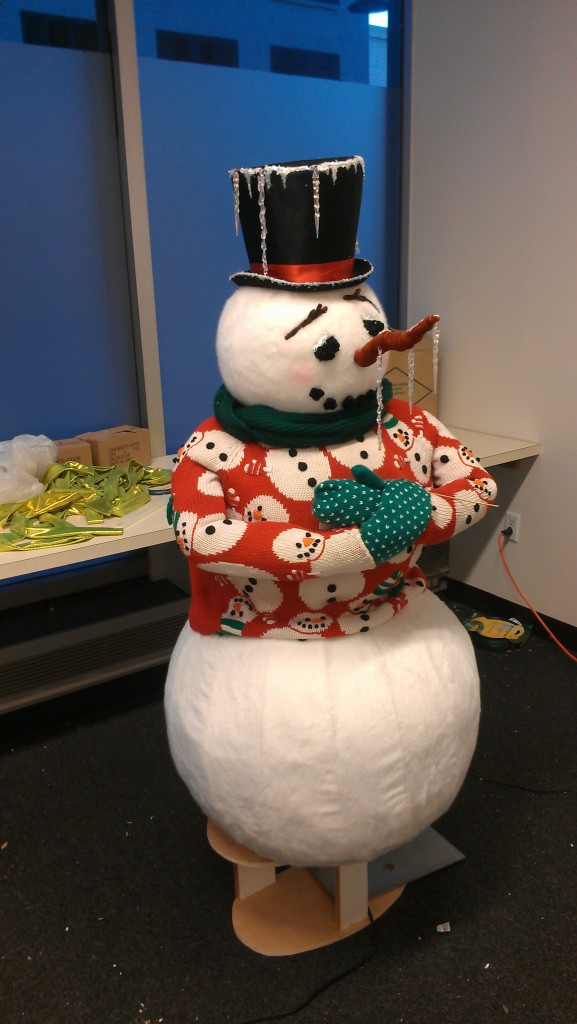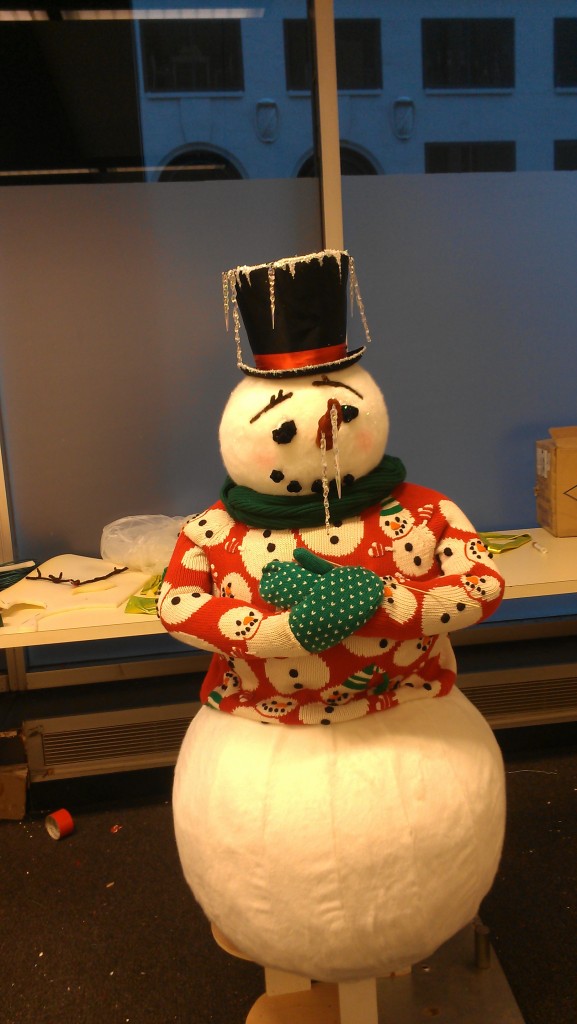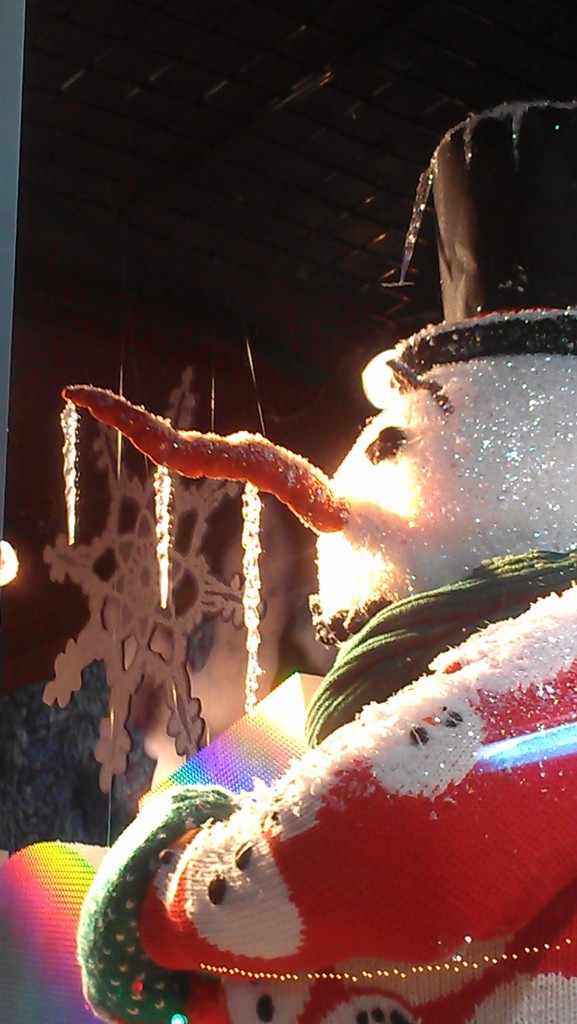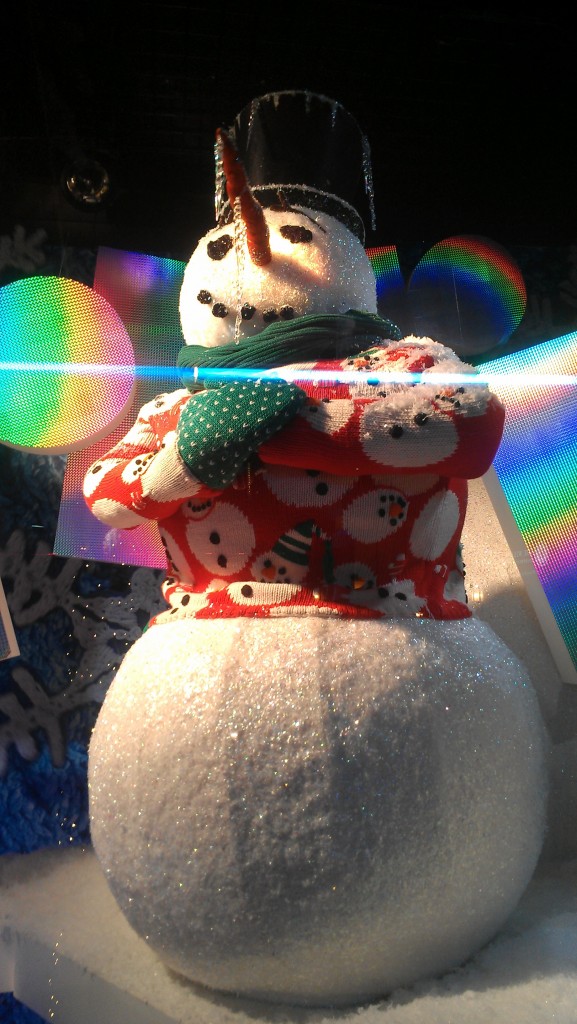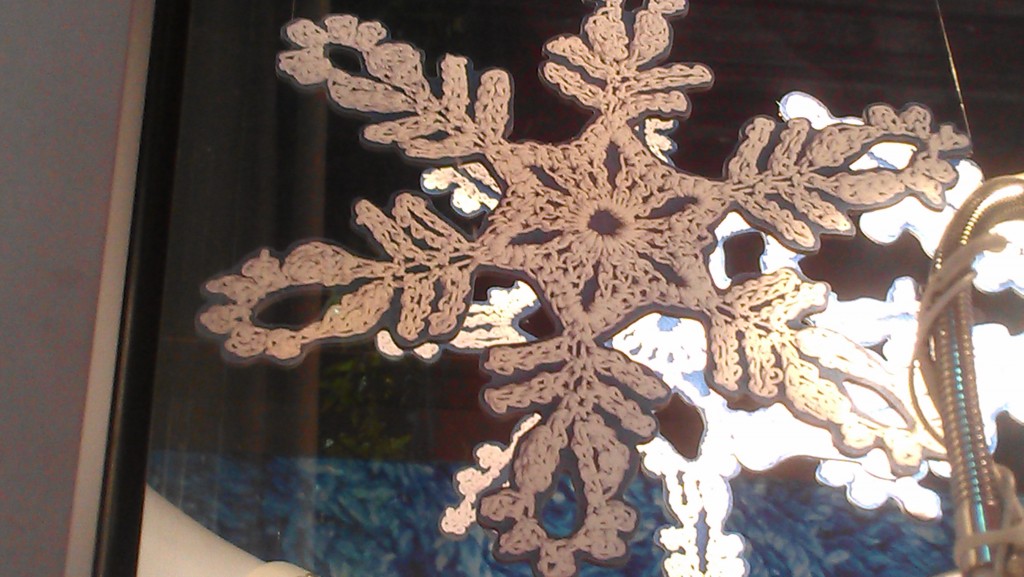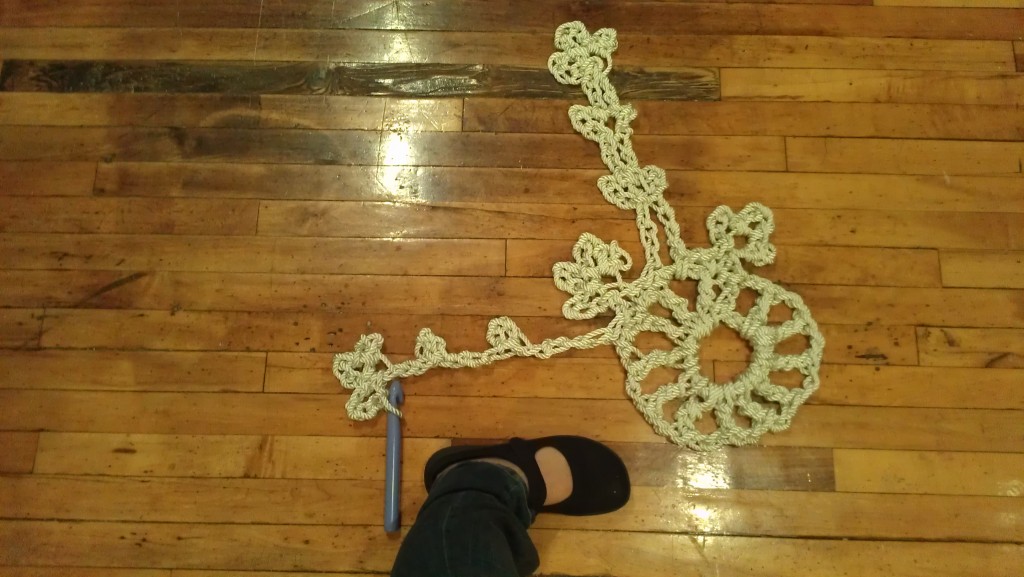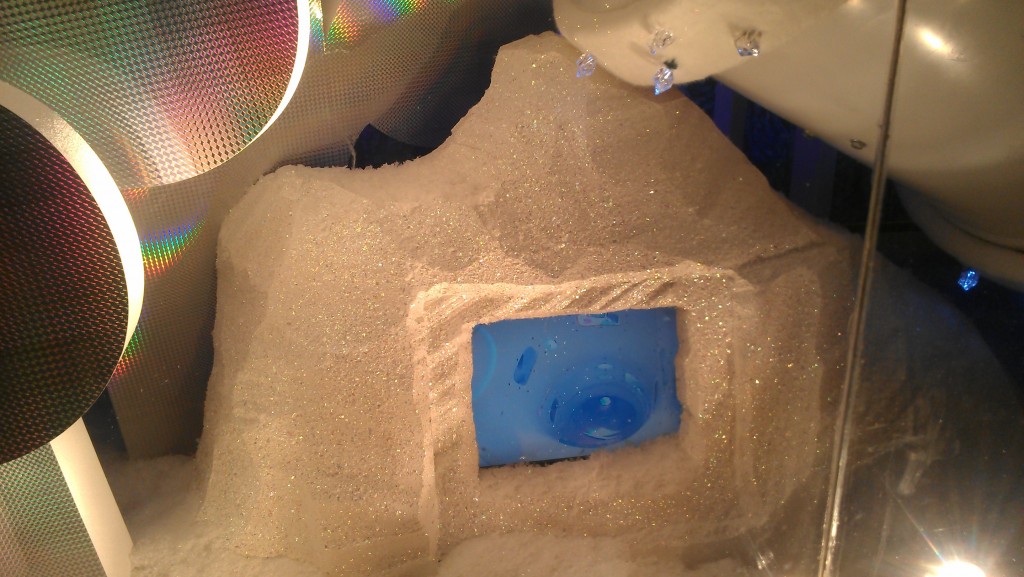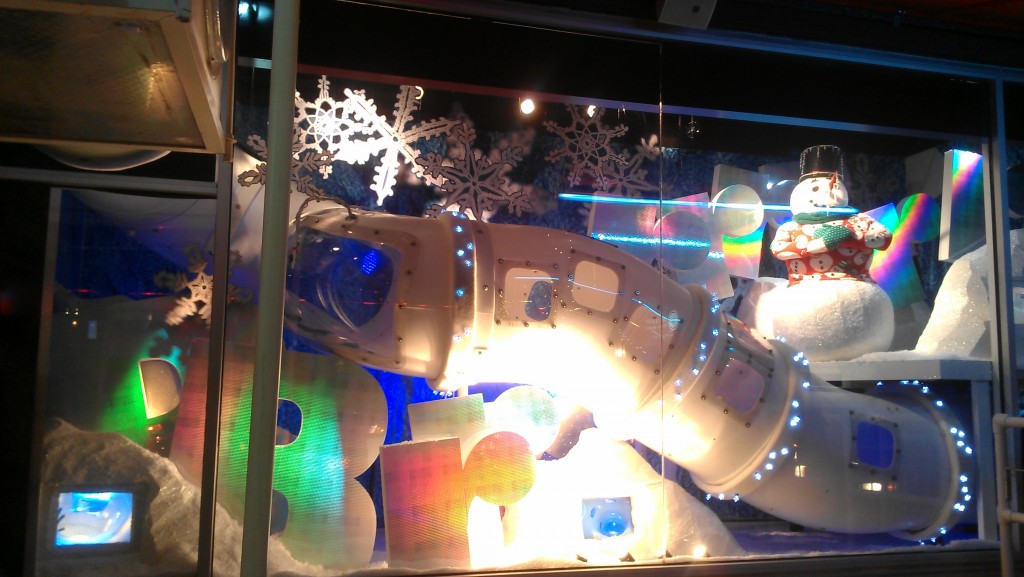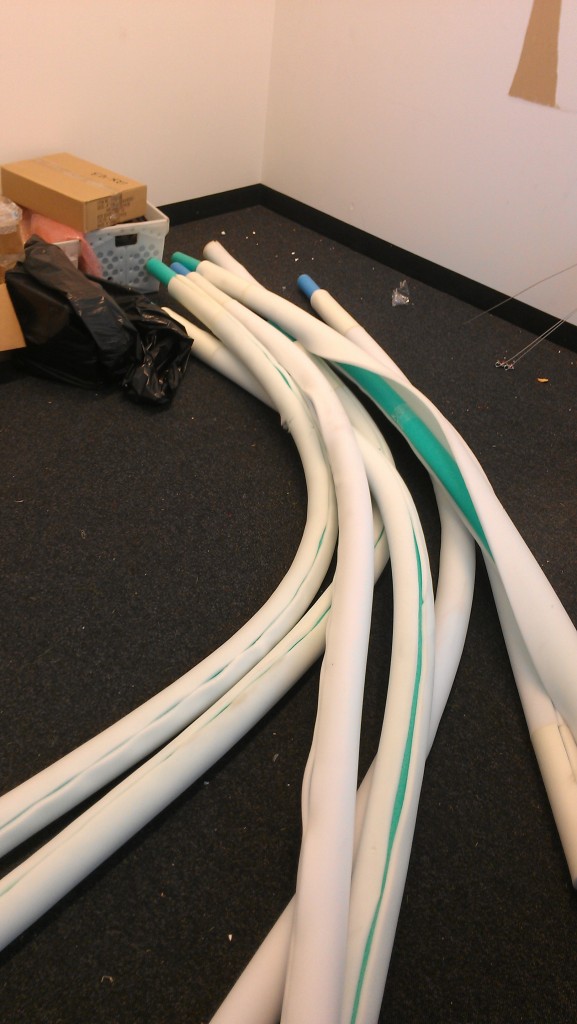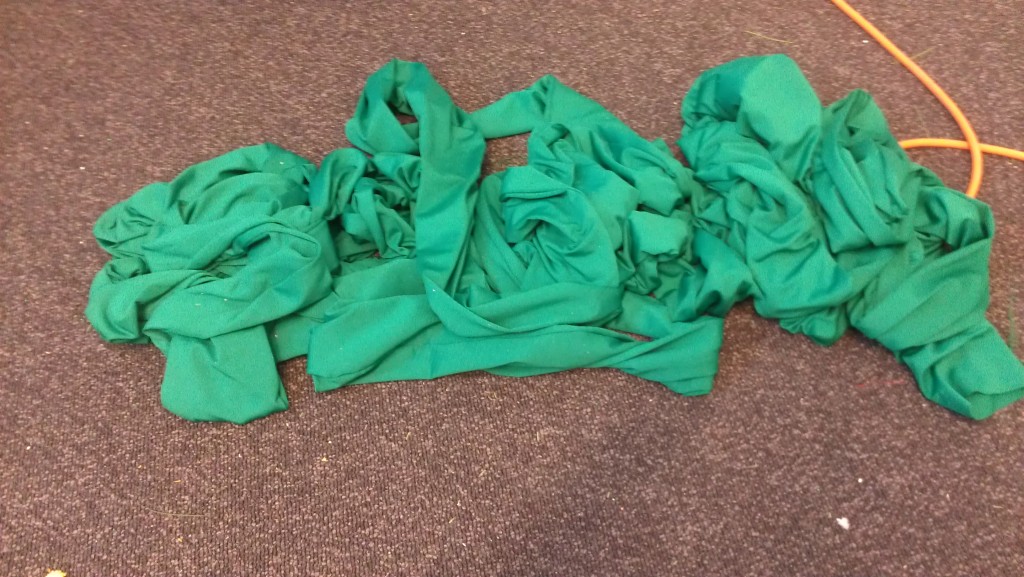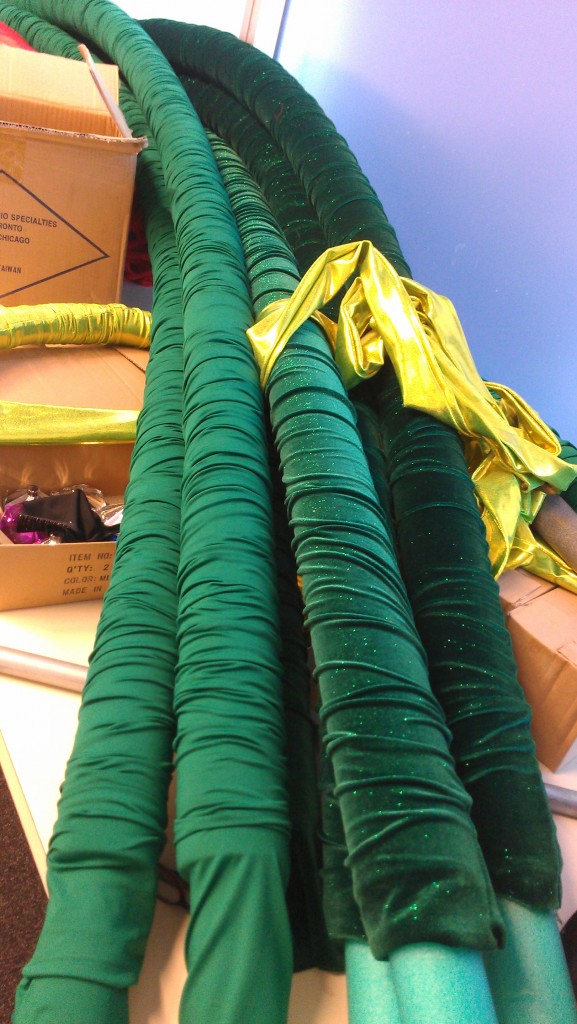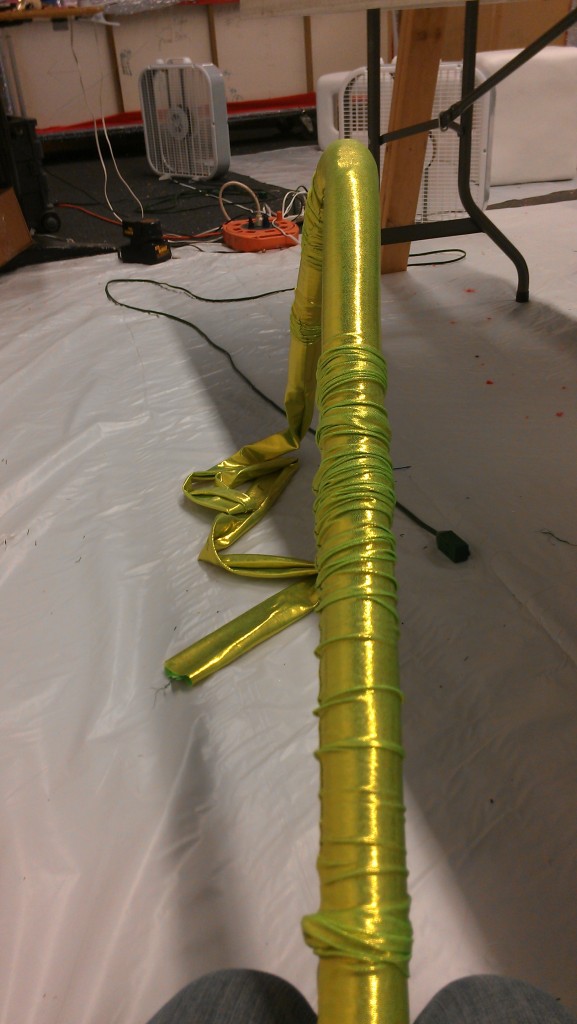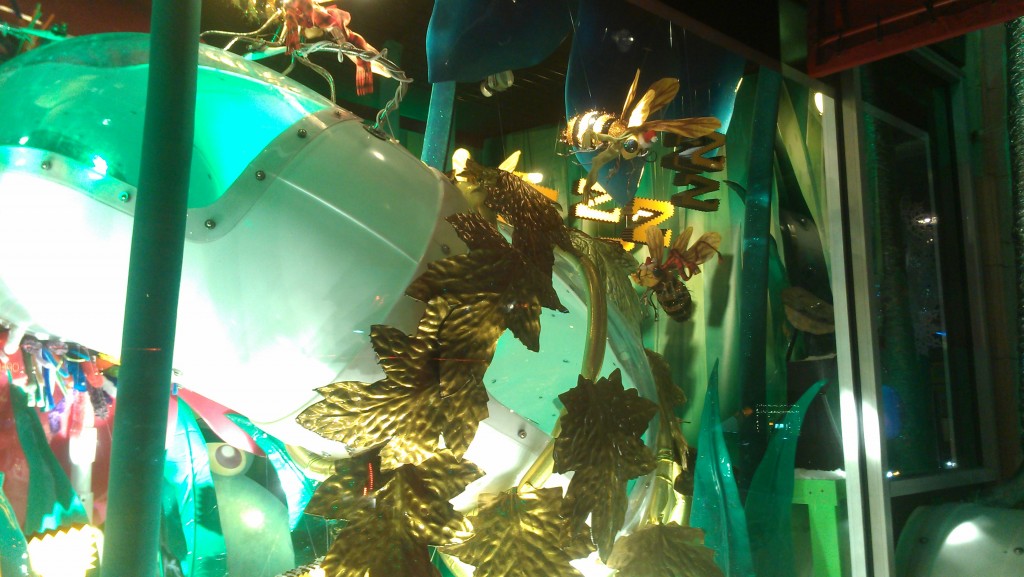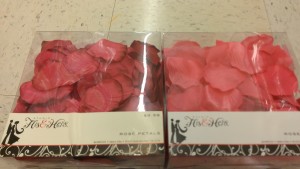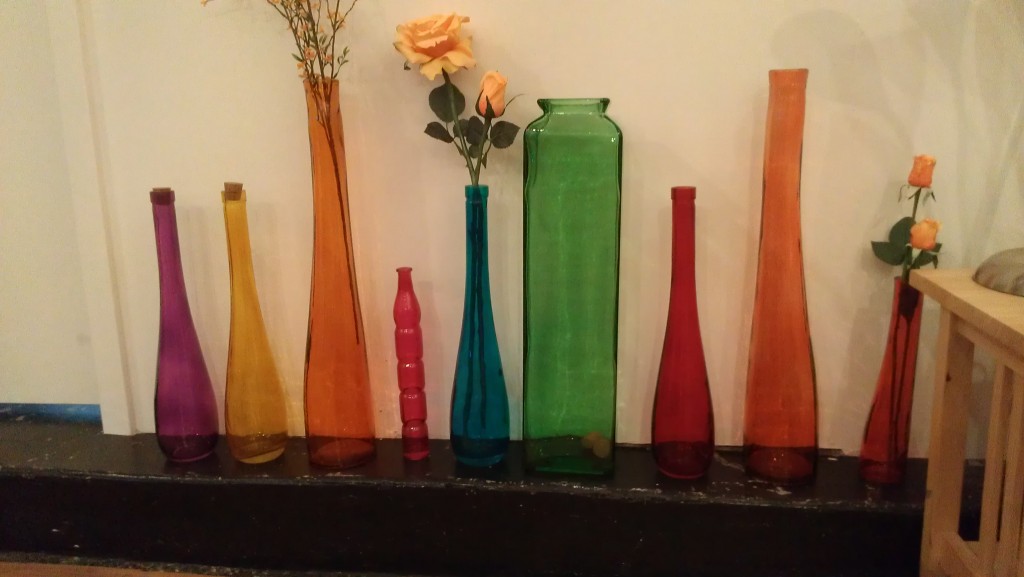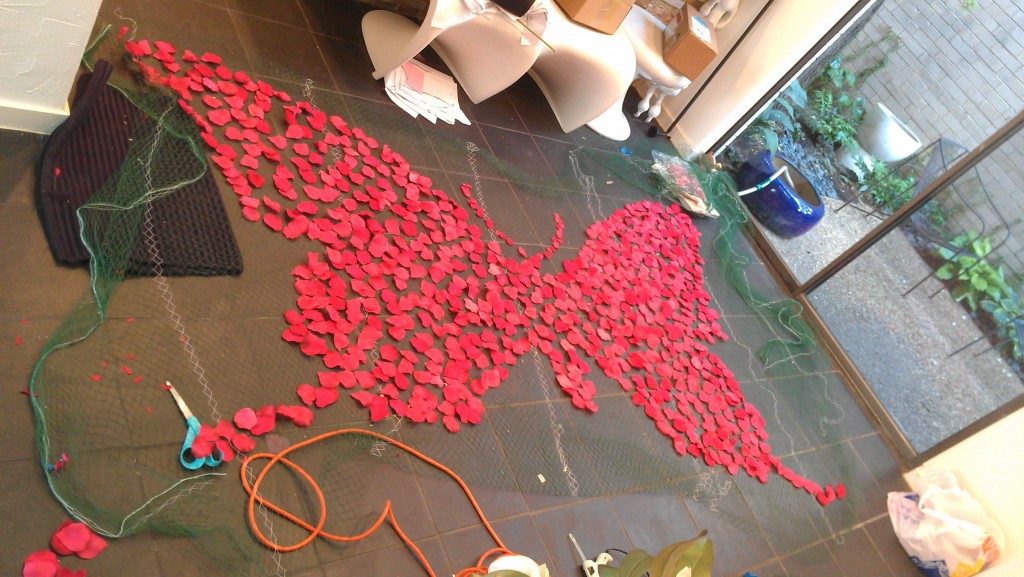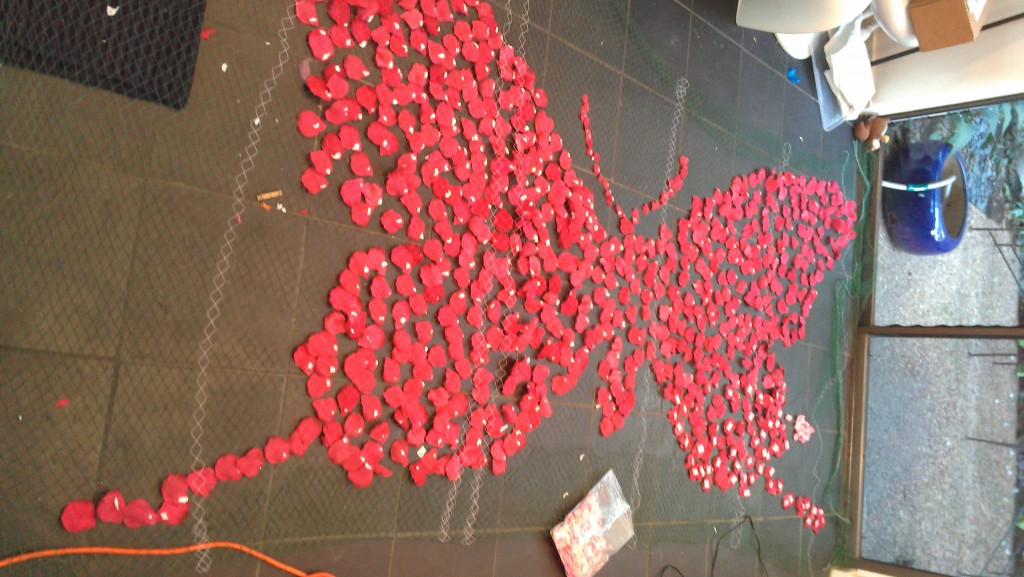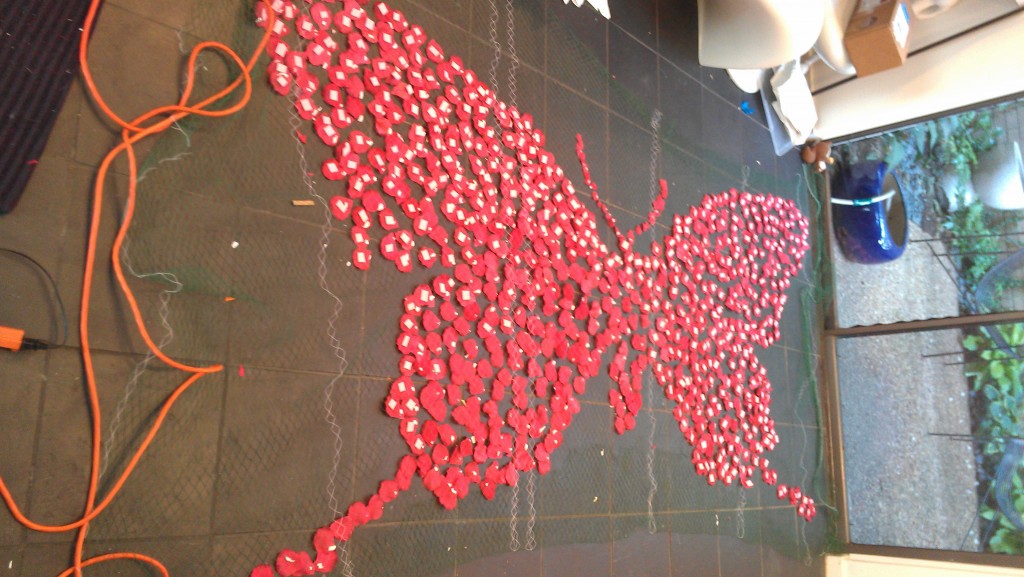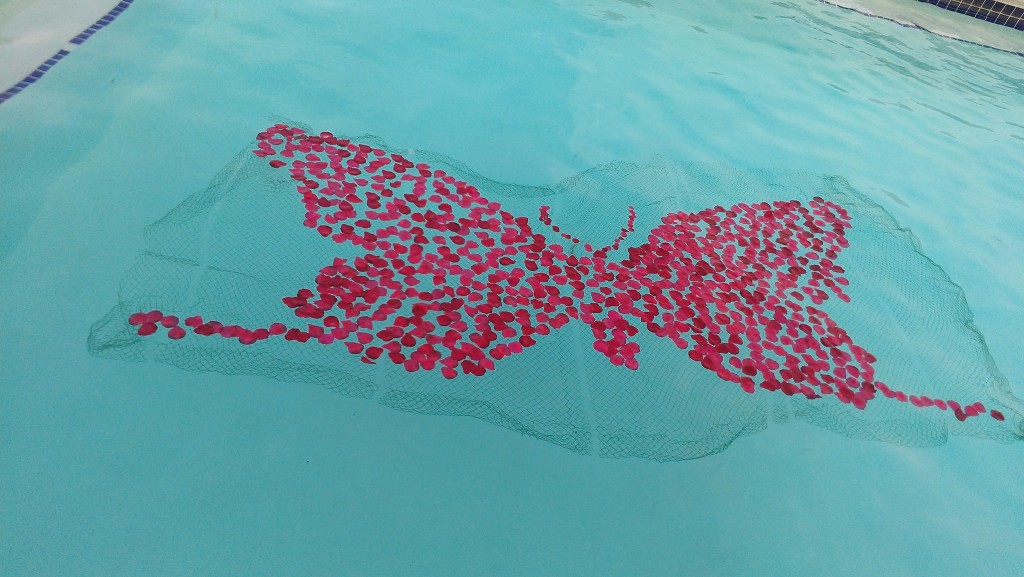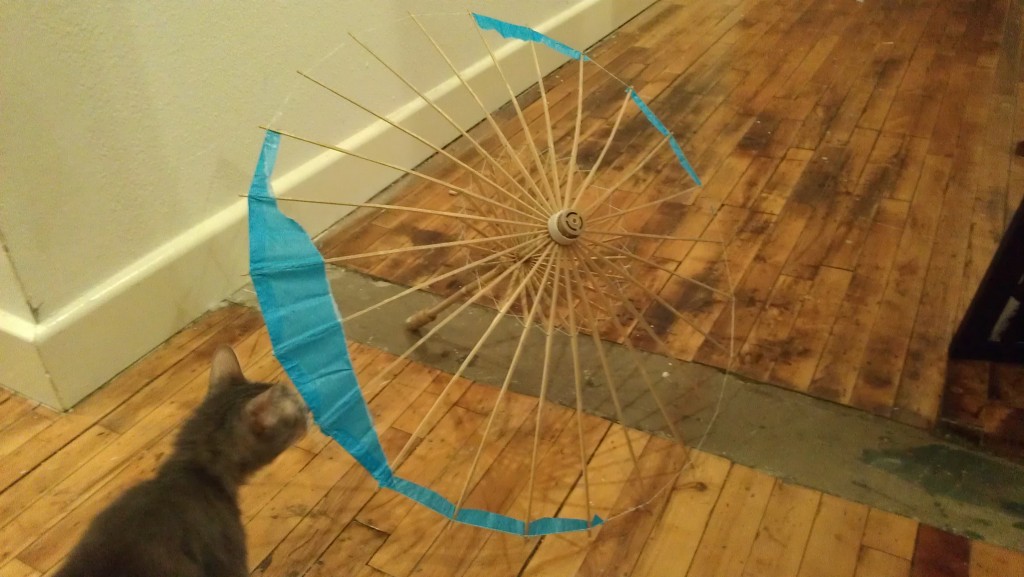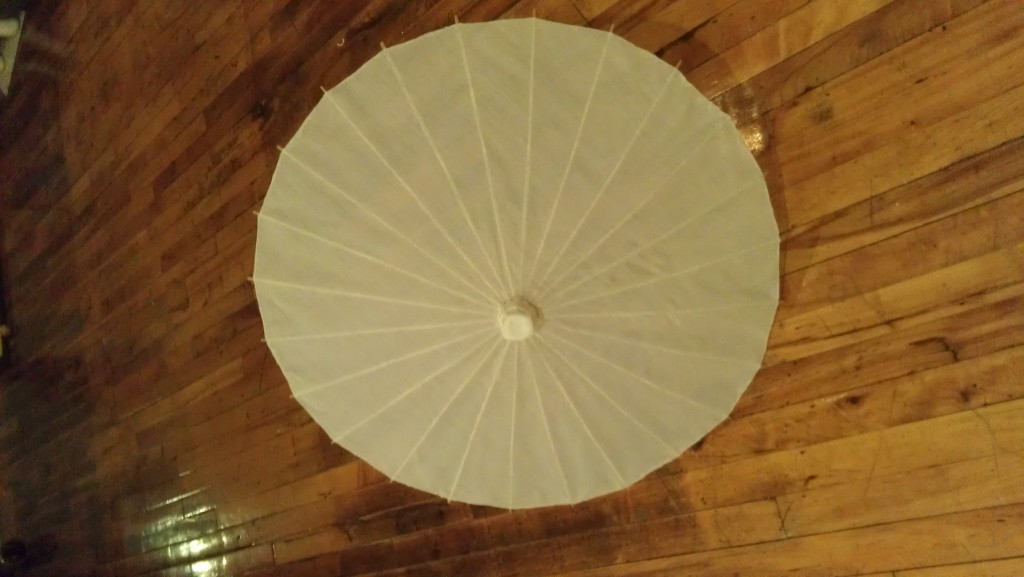A lot of people’s talents went into creating these windows. The video from 2 years ago can give you an idea of what goes into popping the windows open, putting the crawl-through tubes together, and then sealing the whole thing back off again. But then there’s the planning, the lighting, the backdrops, the lettering on the windows (this year even the plastic covering the windows pre-unveiling had writing printed on it), the lettering inside the windows, and on and on. There are dozens of small motors set up throughout the windows that make the bees fly, the springs boing, the snowman shiver, fruits and silverware and wheels spin. You don’t even want to know how long it took to bring motion to the cascade of jewels.
And most of it’s a pretty thankless job of running around, futzing with wires, installing the not-so-interesting hardware to hang the interesting things from the ceiling, and so forth making the non-visible parts work. I’m not going to go into all of that, mostly because I wasn’t there for much of it. The parts I got to admire were when Carlos, along with his trusty assistant, Carlos, made crazy things come to life.
Here is a huge cookie:
When not on the cookie itself, the cookie part looked exactly like cat puke.
Here it is in the window:
The candy video monitors
Icing:
In the window:
The enormous cake being squished by the tube and the n&m’s
It starts out looking like cheese:
The cake covered in plastic to protect it while the raspberry filling gets painted. To the left, the n&m’s and the chocolate frosting drying on the table. To the right, Carlos’s feet and elbow:
In the window:
This is how seriously cake-y this looks, even on close inspection:
Carlos also put together the infinitely-pouring bag-o-jewels. There’s an enormous, still pile in the front, then a spinning pile behind it designed to look like it’s an unending flow coming out of this huge, magic, velvet bag.
Carlos also blinged up a couple sets of paparazzi, made even more dramatic by the the folks in charge of the lighting:
Every year there’s a big event in the nearby park square in which Santa flies in from a nearby parking garage. This year, Carlos built a realistic-looking jetpack that included a chemical reaction designed to look like it really was shooting flames out the back. Alas, I didn’t get any pictures of that, as I witnessed the building of it during what was, for me, a 12-hour day that still had more non-Neiman’s sewing to do in the evening.

